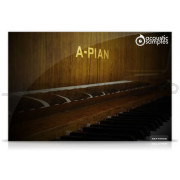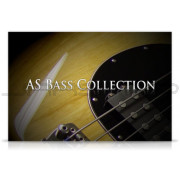You're currently on:
Wurlie, Wurlitzer student electronic piano



Wurlie is a 64 keys Wurlitzer 206A piano, and as the Wurlitzer company named it, a "Student Electronic Piano".
The 206A is a student model, and is very similar to a 200A except for its beige color and built in amp/speaker (it also did not come with a tremolo). It was designed to be paired with a 206, which is the teacher model and they were mainly used in conservatories. The teacher had a headphone and microphone to be able to listen to each student individually and talk to them without others hearing them.
Here are a few pictures of the model that we recorded.





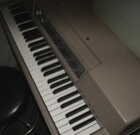 The Front panel saying the name Student electronic piano (and not electric).The headphones with the mic provided with the student model.The only two knobs existing on the front of this model, volume and speaker / headphones / ensemble.The cabinet with the sustain pedal and a space to put the headphones.Picures from the top showing the whole instrument.
The Front panel saying the name Student electronic piano (and not electric).The headphones with the mic provided with the student model.The only two knobs existing on the front of this model, volume and speaker / headphones / ensemble.The cabinet with the sustain pedal and a space to put the headphones.Picures from the top showing the whole instrument.We recorded it both from the direct output using a state of the art DI (Universal Audio Solo 610) and also using a pair of microphones right above the keys next to where the head of a player would be.
We also included our common features like the multiple releases along with our sympathetic resonance system (both pedal up and down).
You also have access to various commonly used effects and a full control over the midi parameters to make it fit to your keyboards response.

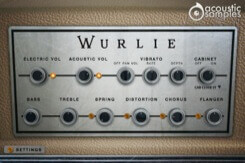
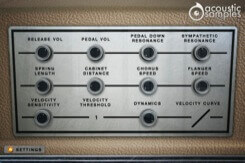
Default Interface
You can adjust:
Vibrato: vibrato effect of electric pianos is really a part of the sound, here you can control the amount and speed of it. We also addedthe possibility of a volume tremolo as players ofter use the volume knob to create that effect.
Cabinet: You can turn on or off the amp simulation, based on a the real amp of the Wurlitzer (at three different distances), we also added a few other amp simulations like a Mesa Boogie, a fender 210, and a Gibson. You also have the choice to load them in stereo or in mono.
EQ, Bass and Treble: a parametric EQ with the two knobs.
Reverb: We used an IR of a spring reverb to mimic the most used reverb on this kind of instrument.
Distortion, Chorus, Flanger: Wurlitzers are often played with these three effects so you have a faw to use them directly from the interface.
The Pedal Noise: the sound produced when you press or release the pedal, it adds a lot to the realism.
The Pedal Down Resonance: just like on a real piano, when you play and the pedal is down, the other reeds are vibrating because they are undampened. We recorded that effect that adds realism.
The Sympathetic Resonance: again, on a real piano, when you play a C3 and the C2 key is pressed, the reed of C2 resonates. We sampled that too.
The Spring lenght: the spring reverb is as its name suggests, based on a spring and the lenght of the reverb depends on that spring so we figured that modifying its length should be available.
The Cabinet Distance: we recorded a few different IRS of the cabinet at different distances that add more or less room to the sound.
You can control the Chorus Speed as well as the flanger speed if the default values don't suit your needs.
The Velocity Sensitivity changes the volume curve of the library.
The Velocity Threshold is simply the minimum velocity that you will have to play to hear a sound.
The Dynamics will set the minimum volume for velocity 1 and give you access to all the dynamics that you want.
The velocity curve remaps midi input and will give it a concave or convex shape thus changing some sort of a "MIDI sensitivity".
Sample player
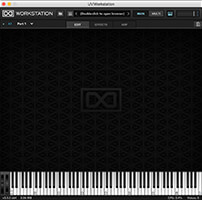

We provide it for free with every library that you buy, you don't need to buy an expensive sampler to use our products. It works on Mac (10.6 or later) and PC (windows XP SP2 or later), in standalone or as a plugin (VST / AU / AAX / RTAS / MAS) and in 32 and 64 bits. You can find more info about it here. If you want to use our products in osx 10.5, please contact us, you will need UVI Workstation v2.1.8 and earlier versions of the UFS files.


Technical description

Registration
You will then be able to register it to your iLok account from our website on this page (you need to be logged in to access this page). The whole process is described in the FAQ (instructions + screencast).
| Variant | 1 |












